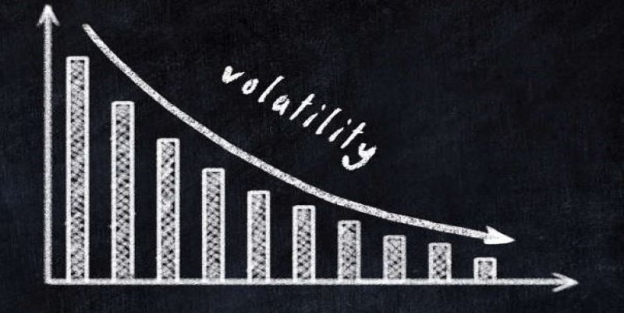
Safe Stock Strategies For Uncertain Times
Tooba
Are market headlines making you second-guess your investments? Economic swings, political shifts, and global events can all stir up uncertainty. But that doesn’t mean your portfolio has to suffer.
The right stock strategies can help you protect your capital, smooth out volatility, and still leave room for growth when markets recover. Let’s look at practical, safe approaches that can help you invest with more confidence in unpredictable conditions.
Focus On Companies With Strong Balance Sheets
When the economy wobbles, financially stable companies tend to fare better; these are firms with low debt, healthy cash reserves, and steady earnings. They can handle slowdowns without cutting too deep into operations or shareholder returns.
Think of businesses like established healthcare providers, essential consumer goods producers, or leading technology service firms with consistent demand. During the 2008 financial crisis, companies with low leverage and high liquidity recovered faster than heavily indebted peers.
A simple way to check a company’s financial health is to look at its debt-to-equity ratio, cash flow trends, and interest coverage. If these numbers show strength, you may have a more resilient stock for stormy markets.
Dividend Stocks For Steadier Returns
In uncertain times, price growth may slow, but dividend-paying stocks can still put cash in your pocket. These payments can help offset losses when markets dip and give you a steady income stream to reinvest.

Well-established dividend payers—such as utility companies, large consumer goods brands, and some major banks—often have long histories of maintaining or even increasing payouts through recessions. For example, certain “Dividend Aristocrats” have increased dividends for over 25 consecutive years.
Reinvesting these dividends during downturns can also work in your favor, letting you buy more shares when prices are low. Over the long term, this can significantly boost your overall returns.
Diversify Across Sectors And Regions
Putting all your money into one sector or region can be risky, especially when uncertainty hits. Diversification spreads your exposure so that weakness in one area can be balanced by stability or growth in another.
For instance, if energy prices drop, your investments in healthcare or technology might still perform well. Similarly, while one country’s economy may slow, another’s could be expanding.
Consider building a portfolio that includes different industries—such as healthcare, technology, consumer staples, and utilities—as well as some exposure to both domestic and international markets. This variety can help cushion the impact of sudden shocks.
Look For Defensive Sectors
Some industries tend to hold up better when the economy slows. These "defensive" sectors provide goods or services that people rely on regardless of market conditions.
Consumer staples like food and household products keep selling even when spending tightens. Healthcare is another area where demand stays steady, since medical needs cannot be easily postponed. Utilities—electricity, water, gas—are also essential, making their revenue streams stable.
Investing in defensive sectors doesn’t mean you’ll avoid all losses, but it can help reduce volatility compared to more cyclical industries like luxury retail or travel.
Dollar-Cost Averaging For Smoother Entry
Trying to time the market is challenging, even for seasoned investors. Dollar-cost averaging (DCA) offers a more predictable approach. This means investing a fixed amount at regular intervals—monthly or quarterly—regardless of market conditions.
When prices are high, you buy fewer shares. When prices are low, you buy more. Over time, this can reduce the impact of market swings on your average purchase price.
For example, if you invest $500 a month into a broad market index fund, you steadily build your position without stressing over short-term price moves. It’s a method that works well for long-term goals like retirement savings.
Keep A Cash Buffer
In volatile periods, having a portion of your portfolio in cash or cash equivalents (like short-term Treasury bills or money market funds) can be reassuring. It gives you the flexibility to seize opportunities when stocks drop without having to sell other investments at a loss.
A cash reserve also acts as a safety net in case of personal financial needs. While cash won’t generate high returns, its stability can help you stay invested in your riskier holdings without panic-selling.
Avoid Highly Speculative Stocks
Chasing “hot tips” or speculative small-cap stocks may be tempting when markets are unpredictable, but the risk can be magnified. These companies often lack the stability, consistent earnings, or access to capital needed to weather downturns.
During uncertain times, it’s generally safer to focus on companies with proven track records and steady demand. While you might miss out on some big short-term gains, you’re also less likely to face steep losses from sudden downturns.
Consider Low-Volatility ETFs
If you prefer a more hands-off approach, low-volatility exchange-traded funds (ETFs) can be a useful tool. These funds are designed to hold stocks that historically show smaller price swings.

For example, a low-volatility ETF might focus on large, stable companies from defensive sectors. This doesn’t remove risk entirely, but it can help reduce portfolio fluctuations and keep your returns steadier over time.
Rebalance Your Portfolio Regularly
Even safe stock strategies need upkeep. Over time, certain investments will grow faster than others, shifting your portfolio away from its intended balance.
Rebalancing—selling some assets that have grown beyond your target percentage and buying more of those that have lagged—helps maintain your desired risk level.
For instance, if your plan is 60% stocks and 40% bonds, but a rally pushes your stock portion to 70%, trimming stocks and adding bonds can bring you back in line. Rebalancing once or twice a year is often enough for long-term investors.
Think Long Term, Act With Patience
Market uncertainty often triggers emotional decisions, but reacting too quickly can harm your returns. History shows that markets recover from downturns, sometimes faster than expected.
Investors who stayed invested through past crises—whether the dot-com bust, the 2008 recession, or the 2020 pandemic shock—eventually saw growth return. While it’s smart to protect your capital, it’s equally important to let time work in your favor.
By focusing on financially sound companies, maintaining diversification, and sticking to a consistent investment approach, you increase your chances of steady gains without taking unnecessary risks.
Positioning Your Portfolio For Stability
Uncertainty in the stock market is unavoidable, but it doesn’t have to derail your goals. By prioritizing strong companies, steady dividends, balanced diversification, and disciplined investing habits, you can make your portfolio more resilient. A thoughtful approach today can help you ride out tomorrow’s storms and be ready for the next wave of opportunity.




